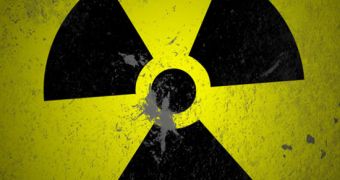In early December, specialists working with the International Atomic Energy Agency visited Fukushima and said that the situation at the crippled nuclear plant was still “very complex.” It turns out that things at this facility are not just complex, but also borderline confusing. At least for Tepco.
News from Japan says that, on December 19, surveillance cameras up and running at Fukushima picked up an odd-looking Steam coming out of the plant's Reactor No. 3.
The steam, which was probably radioactive, was again detected on December 24, 25, and 27.
According to Tepco, its point of origin was most likely the fifth floor of the building serving as home for said reactor, RT reports. Presently, specialists working with Tepco are unable to say what caused the steam to form.
What's interesting is that these reports of steam coming out of Fukushima's Reactor No. 3 reactor are not the first of their kind.
Thus, small amounts of steam were documented over the reactor's building on two occasions in last year's July.
Tepco explains that, because the reactor was badly damaged in March 2011 when the nuclear plant was hit by an earthquake and a tsunami and suffered a meltdown, specialists are having a tough time entering the building and properly assessing the situation.
More so given the fact that the levels of radiation in this area are fairly elevated, and therefore constitute a threat to folks who come a tad too close to the reactor.
The Ecologist says that, all things considered, there are three possible explanations for the steam seen rising over Fukushima's Reactor No. 3.
The first one is that the storage pond inside which radioactive spent fuel rods are kept is drying out. If this were the case, the rods would melt down, radioactive emissions would be released and a nuclear disaster would shortly follow.
The only good news is that the chances of this happening are very slim.
One other explanation is that corium, i.e. a molten mixture of portions of nuclear reactor core that formed during the March 2011 meltdown has worked its way through the reactors base and has ended up coming into contact with groundwater, thus causing steam to form.
Lastly, it is possible that stray fuel pellets and reactor rod fragments, which happen to be quite hot, have somehow come into contact with rainwater.
Hopefully, Tepco will soon make head and tail of the situation and share more information with the public.

 14 DAY TRIAL //
14 DAY TRIAL //